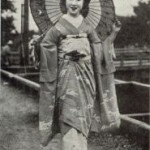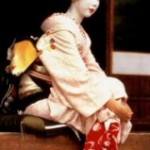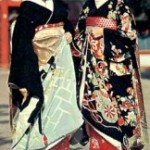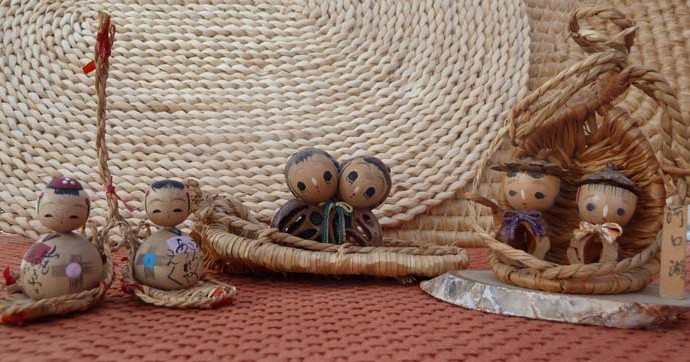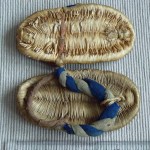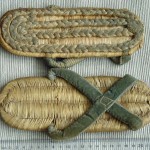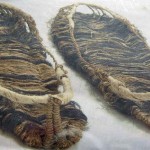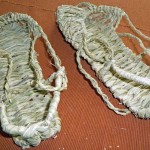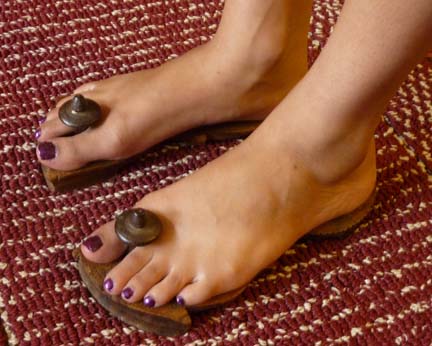It is always fun to welcome a shoe from a different country to the Collection. I found these in the Etsy on-line store Hillbillyfilly. They were described as “Vintage 40s WWII exotic carved wooden platform dragon peep toe ankle strap high heel shoes.” All true! To expand a bit on this description, shoes like these were favorites among servicemen stationed in the Philippines during the Second World War who bought them as souvenirs for the gals back home. A sailor stationed there brought this pair home, and I did notice that they were shipped to me from San Diego, a U.S. Navy town then and now. Typically the wooden sole was carved, usually with a scene from a rural village and painted in bright colors. This pair has a finely carved and varnished dragon on each side of the shoe, holding up the heel. The vamp is made of two layers of woven material. The outer layer is an open weave of raffia fibers. These cover a tightly woven layer of raffia fabric, dyed a burnt orange color. The ankle ties are constructed the same way. The vamp is attached to the wooden sole with metal tacks. The bottom of the sole is stamped with the maker, Tesoro’s of Manila (established in 1945). The style is a peep toe wedge, very popular in the 1940’s in the U.S. and England. It was likely made primarily for export.
Shoes and sandals constructed at least in part with raffia fibers are a growing part of the Collection. The image below shows dried raffia fibers that were grown in Madagascar and packaged in Ohio. I bought it from an Ebay store (Kurlykatescorner).
Photo above by maryan54, Webshots, bundles of raffia fibers being unloaded, Unisan, Quezin, Philippines. In the Philippines the palm is called the Buri Plant (Raphia farinifera) and is the source of two fibers, raffia and buntal.
These fibers are obtained from Raffia palms with most species native to tropical Africa, particularly Madagascar. One species occurs in Central and South America as well. The leaves of one species grow to 25 meters long and 3 meters wide. The fibers are made from the membrane on the obverse side of the leaf (photo below by Andrew Massyn, Wikimedia Commons, Raphia australis, Cape Town, S.A.)
Raffia fibers are remarkably versatile. They can be dyed and woven into textiles that resemble cotton cloth. These fibers have been used to make shoes and sandals since ancient times such as the Moroccan shoes (collection item Mor1) below, the colorful style of which goes back over 1000 years.
Contemporary designers of both high end and inexpensive shoes and sandals continue to value the flexibility of materials made of raffia and continue to use them along with leather, cloth, wood and man-made materials. The Rocket Dog platform sandals shown below, purchased from the Ebay shop Jazcifaldi, were made in China. They provide a nice example of the use of raffia fibers in an inexpensive contemporary shoe.






